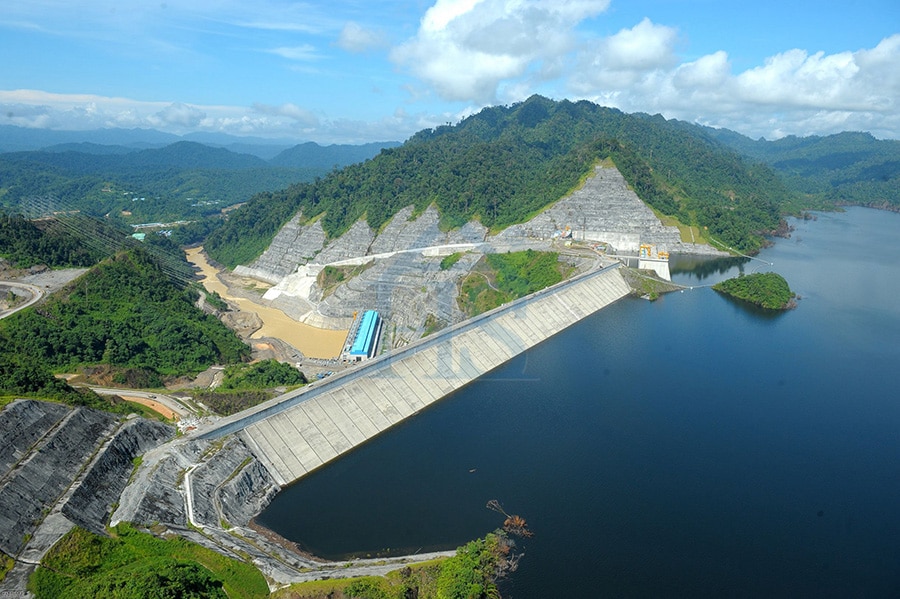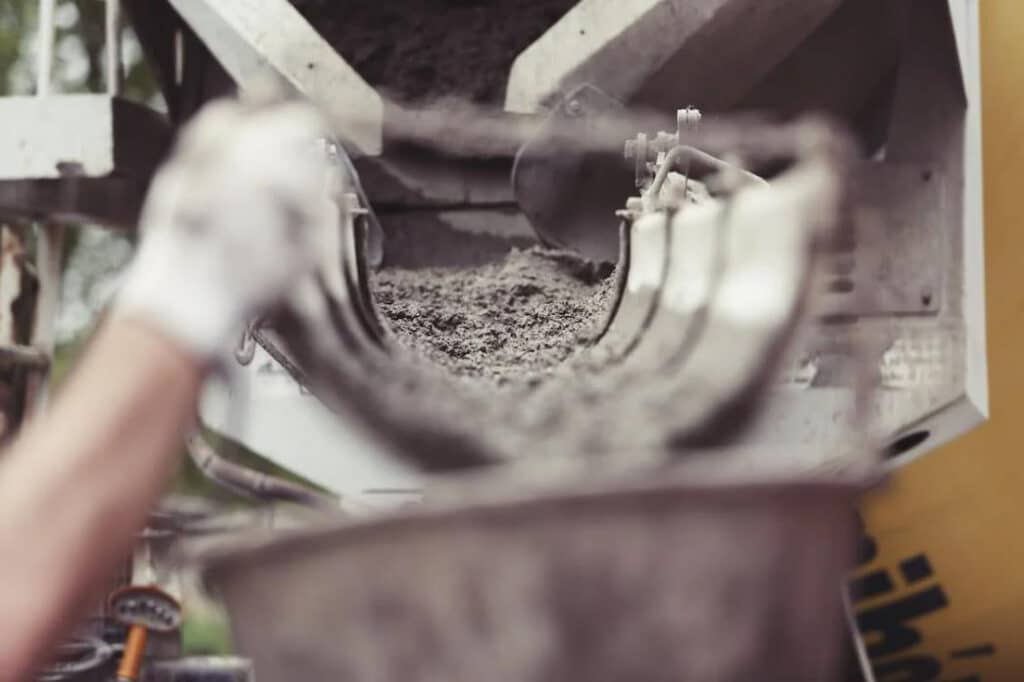RCC는 제로 슬럼프입니다., 진동롤러로 다짐한 저수분 콘크리트 혼합물. 일반적으로 포장 도로에 사용됩니다., 댐, 높은 강도와 내구성으로 인해 산업용 바닥재 및 산업용 바닥재에 사용됩니다..
실리카 연기가 RCC를 향상시키는 방법
RCC에 실리카흄을 첨가하면, 시멘트 수화 중에 생성된 수산화칼슘과 반응합니다., 규산칼슘 수화물 형성 (CSH). 그 결과 CSH는 더 조밀하고 강해집니다., 이는 콘크리트의 전반적인 특성을 향상시킵니다.. 뿐만 아니라, 초미립자 실리카흄이 시멘트 입자 사이의 공극을 메웁니다., 더 단단하고 더 불침투성인 콘크리트 매트릭스 생성.
RCC에서 실리카 흄의 이점
RCC에 실리카흄을 통합하면 수많은 이점을 얻을 수 있습니다., 포함:
향상된 강도
실리카 흄은 RCC의 압축 강도와 인장 강도를 모두 증가시킵니다., 견고한 응용 분야에 더 적합하게 만듭니다..
향상된 내구성
실리카흄과 수산화칼슘의 반응으로 밀도가 높은 CSH가 형성되어 RCC의 내구성이 향상됩니다., 화학적 공격으로부터 보호하고 장기 유지 관리 요구 사항을 줄입니다..
투과성 감소
실리카 흄의 초미세 입자가 콘크리트 매트릭스의 빈 공간을 채웁니다., 투수성을 감소시키고 콘크리트의 물 및 염화물 이온 침투에 대한 저항성을 향상시킵니다..
향상된 내마모성
RCC에 실리카흄을 첨가하면 내마모성이 향상됩니다., 마모에 더 강합니다., 특히 산업 환경에서.
더 나은 동결-해동 저항성
밀도가 높은 콘크리트 매트릭스에 대한 실리카 흄의 기여로 인해 동결-융해 저항이 증가합니다., 추운 기후에서 사용하기에 더 적합한 RCC 만들기.
시멘트 함량 감소에 있어 실리카 흄의 역할
RCC에 실리카흄을 사용하는 주요 이점 중 하나는 콘크리트 성능을 저하시키지 않으면서 시멘트 함량을 줄일 수 있다는 것입니다.. 시멘트를 실리카흄으로 부분적으로 대체함으로써, 콘크리트 혼합의 전체 비용을 줄일 수 있습니다., 시멘트 생산이 환경에 미치는 영향을 최소화할 수 있습니다..
사례 연구: RCC에 실리카흄을 성공적으로 적용

1. 바쿤댐, 말레이시아
에 완료됨 2011, 바쿤 댐은 동남아시아에서 가장 높은 콘크리트 표면의 암석 채우기 댐입니다.. 댐의 강도를 향상시키기 위해 RCC 혼합물에 실리카 흄이 포함되었습니다., 내구성, 화학적 공격에 대한 내성. 결과적으로, 댐은 혹독한 열대 환경과 엄청난 수압을 견디는 데 탁월한 성능을 보여왔습니다..
2. 기베 III 댐, 에티오피아
기베 III 댐, 에 완료 2016, 아프리카에서 세 번째로 큰 RCC 댐입니다.. 실리카흄은 콘크리트의 강도와 내구성을 높이는 데 중요한 역할을 했습니다., 공격적인 환경에 적합하게 만듭니다., 여기에는 변동하는 수위와 다양한 온도에 대한 노출이 포함됩니다.. 이제 댐이 생성됩니다. 1,870 전력의 MW, 에티오피아의 전력 공급에 크게 기여.
3. 상부 스틸워터 댐, 미국
유타에 위치, 어퍼 스틸워터 댐(Upper Stillwater Dam)이 완공되었습니다. 1987 미국 최초의 주요 RCC 댐이었습니다.. RCC 혼합물에 실리카흄을 사용하면 압축 강도가 향상됩니다., 감소된 투과성, 그리고 강화된 내구성. 이러한 개선을 통해 댐은 홍수 조절 및 물 저장 시설로서의 주요 기능과 관련된 스트레스를 견딜 수 있었습니다..
롤러 압축 콘크리트에 실리카흄을 성공적으로 적용한 것은 재료의 다양성과 전 세계 다양한 유형의 프로젝트 성능을 향상시킬 수 있는 잠재력을 보여줍니다..
결론
롤러 압축 콘크리트에 실리카흄을 혼합하면 강도 측면에서 많은 이점을 제공합니다., 내구성, 침투성, 내마모성, 및 동결-해동 저항성. 뿐만 아니라, 실리카흄 사용의 환경적 이점, 시멘트 함량 감소 및 산업 폐기물 재활용 포함, 현대 건설 프로젝트를 위한 지속 가능한 옵션으로 만듭니다.. 하지만, RCC에서 실리카 흄 사용과 관련된 문제와 한계를 극복하려면 적절한 취급 및 안전 조치를 준수해야 합니다..
FAQ
- RCC에서 실리카 흄의 일반적인 복용량은 얼마입니까??
RCC의 실리카 흄 복용량은 프로젝트 요구 사항에 따라 다릅니다.. 하지만, 일반적으로 범위는 다음과 같습니다. 5% 에게 15% 시멘트의 무게로.
- 실리카 흄을 다른 제품과 함께 사용할 수 있습니까? 보충 시멘트질 재료?
예, 실리카흄은 다른 보충 시멘트질 재료와 함께 사용할 수 있습니다., 비산회 및 슬래그와 같은, RCC의 특성을 더욱 향상시키기 위해.
- 실리카 흄의 첨가가 RCC의 경화 과정에 영향을 줍니까??
실리카흄을 첨가하면 높은 반응성으로 인해 경화 공정 조정이 필요할 수 있습니다.. 실리카흄을 함유한 RCC의 원하는 성능을 보장하려면 적절한 경화가 필수적입니다..
- 실리카흄은 모든 유형의 콘크리트 프로젝트에 적합합니까??
실리카 흄은 수많은 장점을 제공하지만, 그 적합성은 특정 프로젝트 요구사항과 콘크리트의 원하는 특성에 따라 달라집니다.. It is essential to consult with engineers and material suppliers to determine the appropriate use of silica fume in a given project.
- How is silica fume added to the RCC mix?
Silica fume can be added to the RCC mix either as a dry powder or as a slurry, depending on the requirements of the project and the concrete production process.





